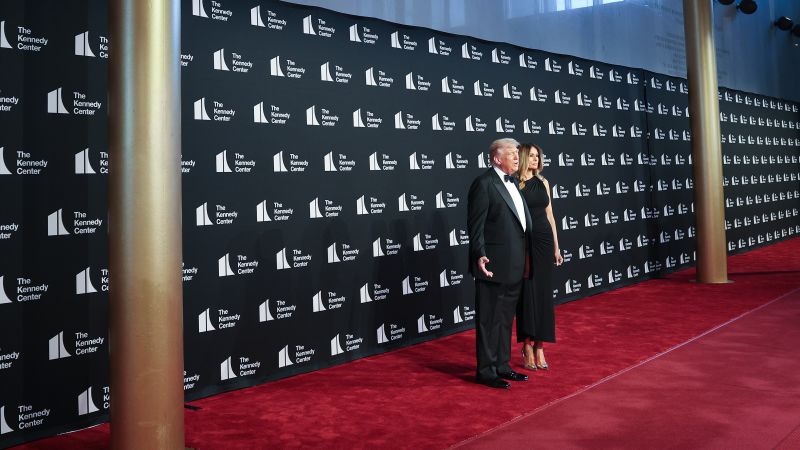The recent opening night of the musical “Les Misérables” at the Kennedy Center saw President Donald Trump at the center of heated reactions, encapsulating the nation’s current socio-political climate. His attendance elicited both cheers and boos from the audience, illustrating the polarized sentiments that define his presidency. As the spotlight shifted from the performance to the political milieu, many individuals in attendance vocally expressed their opinions, leading to a theatrical scene that rivals the play on stage.
When the curtain rose on the first act, the theater was filled with applause as Trump and First Lady Melania Trump stood. However, the applause was soon interrupted by a woman from the orchestra section who began shouting accusations, calling Trump a “convicted felon.” The crowd’s response was mixed, with segments cheering while others responded with disapproval. This moment typified the atmosphere of division that followed Trump throughout the event. Despite her voice being drowned out by applause, her words emphasized the contentious feelings that have existed since Trump’s time in office.
The tumult continued as Trump exited the theater temporarily, allowing a voice from the audience to erupt with expletives and condemnation. The crowd’s reactions fluctuated between expressions of love and disdain, illuminating the stark divide in public opinion regarding the President. Upon his return, Trump signaled to his supporters with a now-familiar fist pump, echoing his rallying cries from past events. This robust display resonated with the spectrum of responses from the audience, reinforcing both the enthusiasm of his supporters and the disdain from his critics.
Interestingly, Trump’s approach to attending cultural events seems markedly different from his initial term in office. He has embraced the arts scene in Washington, D.C., a city known for its progressive stance. Having installed close allies on the Kennedy Center’s board and positioned himself firmly as chairman, Trump appears determined to reshape the cultural landscape according to his vision. His willingness to engage with the arts—and the opponent’s backlash—demonstrates his strategy of leveraging such events to galvanize his political base.
Among those present were supporters who expressed their admiration for Trump, choosing to drown out the protests amidst the performance. Darlene Webb, a longtime supporter, expressed her desire to clap louder to counter the backlash, lamenting the negativity they encountered. Meanwhile, Cara Segur found it ironic that Trump attended a musical with themes central to redemption and societal judgment, such as the plight of an ex-convict surrounded by law enforcement.
The evening also saw the presence of four drag queens who visually countered Trump’s prior denunciations of inclusive performances, dressed in extravagant fashion they intended to celebrate diversity and challenge the very atmosphere that some believed Trump’s policies threatened. One of the queens, Tara Hoot, spoke on the importance of presence, explicitly stating their participation as a representation of inclusivity.
Despite the protests, a large segment of the audience chose to focus on the arts, valuing the evening as one of cultural significance rather than divisiveness. Carol Campion, attending with her family, voiced her hopes for the Kennedy Center to maintain its focus on the arts rather than become mired in political discourse. In stark contrast, the performances culminated in a standing ovation, received not just by Trump’s party in the presidential box, but by many in attendance who celebrated the night’s artistic achievements.
Before the show, Trump participated in a VIP reception aimed at acquiring funds for the venue’s regeneration, indicating a progressive approach to leadership tied to the arts—raising a notable sum that reflected support for cultural spaces. With grand ambitions, Trump remarked on reshaping the Kennedy Center to unprecedented heights.
In the aftermath, Trump remained unfazed by reports of potential boycotts from cast members over his attendance. His dismissive attitude toward the protests highlighted his conviction to stay the course, with a focus on governance above popular sentiment. His resilience reflects a broader narrative that characterizes his time in office, where challenges and criticisms are often met with unwavering defiance. The evening at the Kennedy Center highlighted not just bold cultural performances, but also symbolized the myriad conflicts inherent in contemporary American politics.



